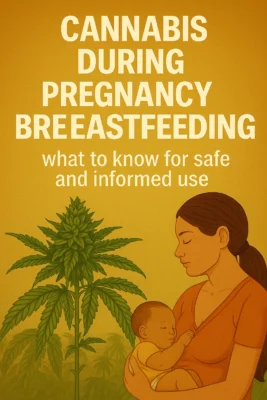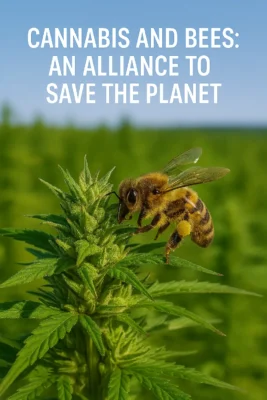Hemp (Cannabis sativa), one of the oldest cultivated plants in the world, plays a crucial role in the future of global sustainability. Thanks to its incredible properties, hemp can offer eco-friendly solutions across various sectors, from industrial production to soil regeneration. As global attention increasingly shifts towards eco-friendly technologies and practices, hemp emerges as a versatile renewable resource that could drastically reduce humanity’s environmental impact.
In this article, we will explore how hemp can truly help save the environment and how Italy, along with the rest of the world, can benefit from this multifunctional plant. We will examine its benefits for agriculture, construction, fashion, energy production, and more.
Hemp and Sustainable Agriculture
One of the reasons hemp is so attractive from an environmental perspective is its ability to grow rapidly in a wide range of climatic conditions. This plant can reach a height of 4 meters in just three months, requiring fewer resources than other common crops such as cotton or wheat.
Reducing the Impact of Cultivation
Hemp cultivation requires less water and fewer pesticides, making it an environmentally advantageous crop compared to other intensive crops. In many regions of the world, cereal and textile crops demand enormous amounts of water, whereas hemp, with its deep roots, can access underground water reserves, reducing the need for artificial irrigation.
Moreover, hemp has remarkable resistance to pests, allowing farmers to reduce the use of chemical pesticides, which helps preserve biodiversity and soil quality.
Soil Regeneration
Another extraordinary advantage of hemp is its ability to regenerate depleted soils. Hemp is known for its phytoremediation abilities, meaning it can absorb toxins and heavy metals from the soil. This process allows for contaminated soil to become fertile again for other crops.
Furthermore, hemp enriches the soil with nutrients like nitrogen, helping to improve soil structure and prevent erosion. Its deep roots also help stabilize the soil, reducing the risk of landslides and soil degradation.
Hemp as a Renewable Resource for Building Materials
One of the most promising uses of hemp is in the production of building materials. “Hempcrete,” a concrete-like material made from hemp fiber and lime, is lightweight, durable, and has excellent insulating properties.
Hempcrete: A Sustainable Material
Hempcrete not only reduces the use of non-renewable materials like cement, which has a large carbon footprint, but it is also an excellent natural insulator. Buildings made with hempcrete retain heat in the winter and stay cool in the summer, reducing the need for heating and air conditioning.
In addition to being an excellent building material, hempcrete is biodegradable and can be recycled at the end of the building’s life cycle. This makes it particularly attractive to the construction industry, which is one of the leading sources of solid waste and pollution.
Reducing the Environmental Impact of Construction
The production and use of hemp-based building materials could significantly reduce CO2 emissions. Hemp cultivation sequesters carbon from the atmosphere, and the material itself can continue to store CO2 throughout its life cycle. This represents an important opportunity to reduce the environmental impact of construction, one of the most polluting industries on the planet.
Hemp’s Impact on the Textile Industry
One of the greatest advantages of hemp is its versatility as a textile resource. Hemp fiber is extremely strong, lightweight, and has natural antibacterial properties. Hemp also requires far less water than cotton, making it an ecological choice for the fashion industry.
A More Sustainable Fashion
Cotton, the most commonly used natural fiber in clothing, has a massive environmental impact. It requires large amounts of water and pesticides, contributing to pollution and the depletion of water resources. In contrast, hemp can be grown with less than 30% of the water required for cotton and without pesticides. This could revolutionize the fashion sector, reducing the ecological footprint of textile production.
Additionally, hemp fabrics are biodegradable, meaning they don’t end up in our oceans as microplastics when disposed of, unlike synthetic fabrics.
The Paper Industry
Hemp isn’t just a textile resource; it’s also an excellent source for paper production. Hemp paper is stronger than wood paper and requires less water and fewer chemicals for processing. Furthermore, hemp grows much faster than trees, meaning it can be cultivated more quickly and with a lower environmental impact.
Hemp and Renewable Energy
Another sector where hemp can make a difference is energy production. Hemp-derived biofuels can represent an eco-friendly alternative to fossil fuels, reducing greenhouse gas emissions.
Hemp Biofuels
Hemp seed oil can be used to produce biodiesel, a renewable fuel that can be used in diesel engines without significant modifications. Hemp biodiesel is biodegradable and produces fewer emissions than traditional diesel, helping to reduce air pollution.
In addition to biodiesel, hemp biomass can be used to generate electricity, reducing our dependence on fossil fuels and promoting a transition to cleaner, more sustainable energy sources.
Hemp’s Role in Combating Climate Change
One of the most remarkable aspects of hemp is its ability to sequester carbon from the atmosphere. Every hectare of hemp can sequester up to 22 tons of CO2 during its growth cycle, contributing to the fight against global warming.
Large-scale hemp cultivation could play an important role in mitigating climate change, sequestering large amounts of CO2 from the atmosphere and reducing the overall impact of the agricultural and manufacturing industries.
Conclusion: The Future of Hemp and Sustainability
Hemp offers incredible potential for the future of global sustainability. From agriculture to building materials and textiles, this plant can provide eco-friendly solutions for a wide range of sectors. Investing in hemp means not only improving the health of our planet but also promoting a greener and more resilient economy.
With increasing initiatives in favor of hemp legalization and growing interest in sustainability, it is clear that hemp could become a key part of the future of green technologies. Italy, like other nations, has the opportunity to adopt forward-thinking policies to fully exploit the benefits of hemp and contribute to a more sustainable future.



